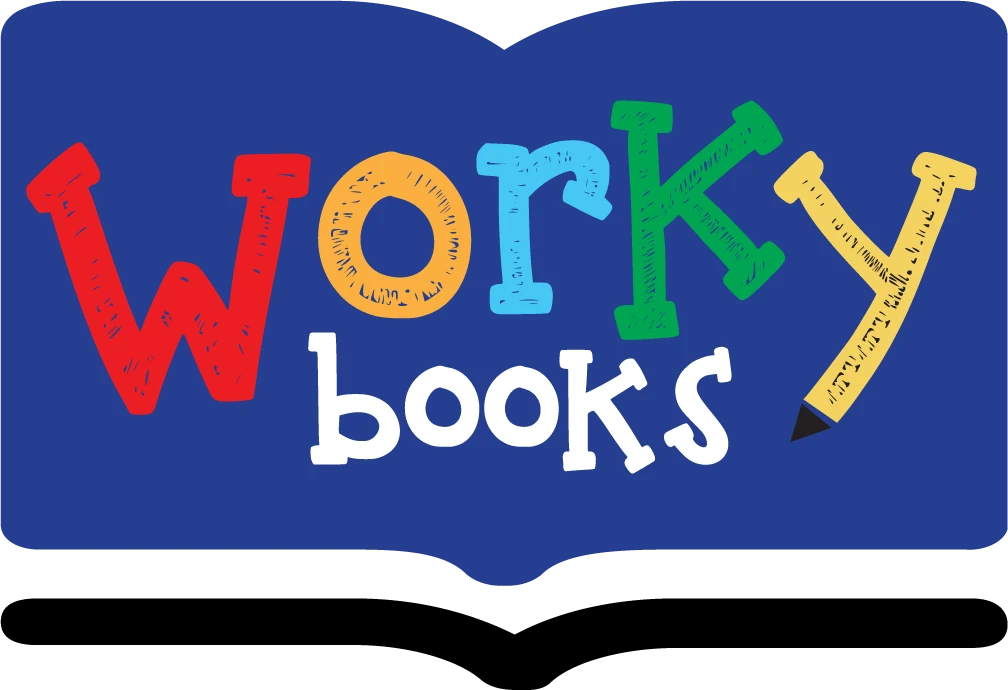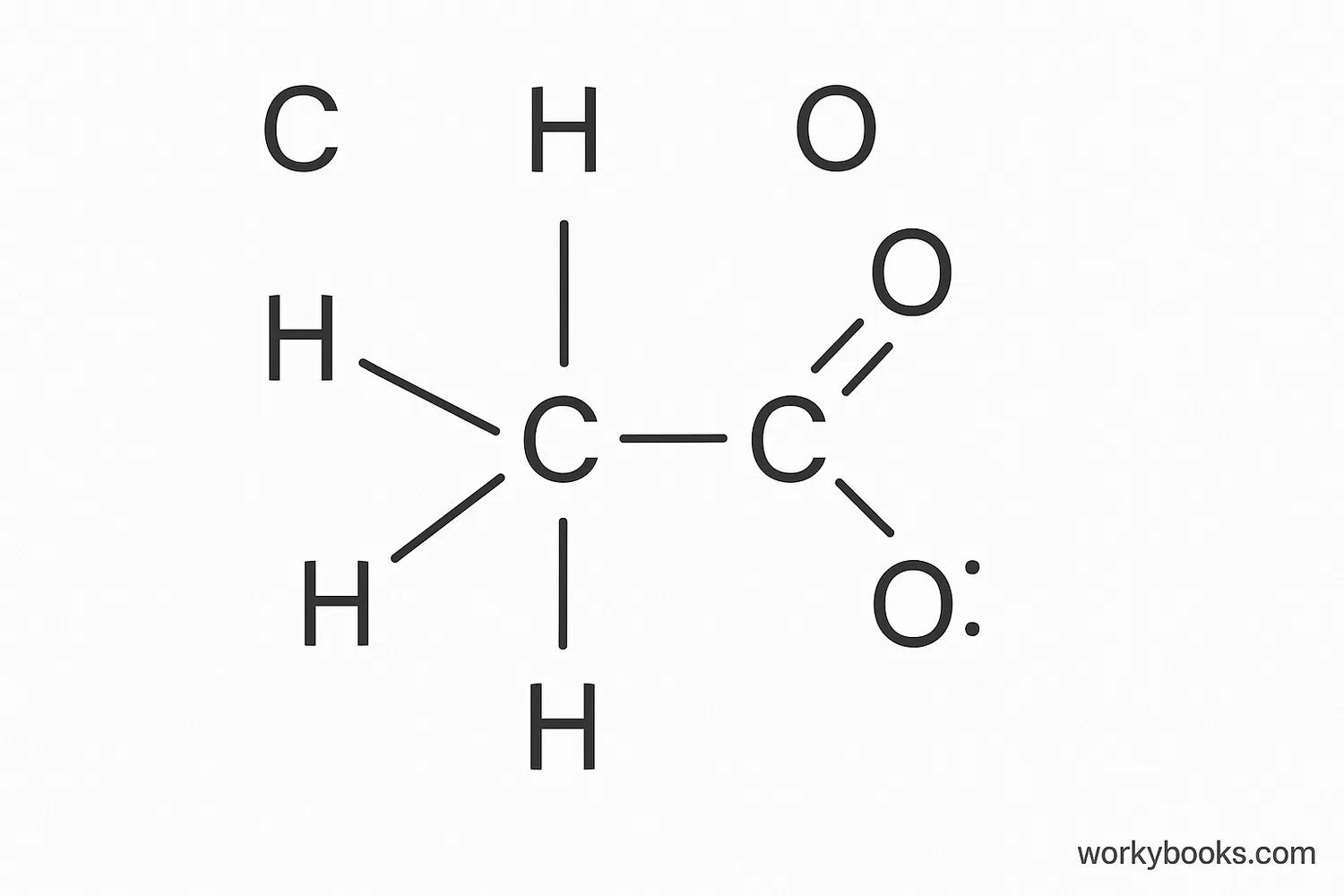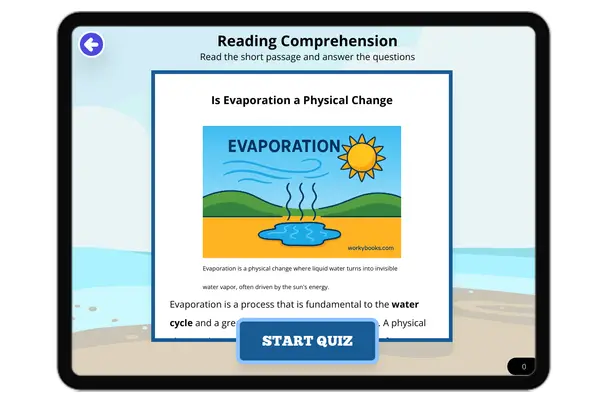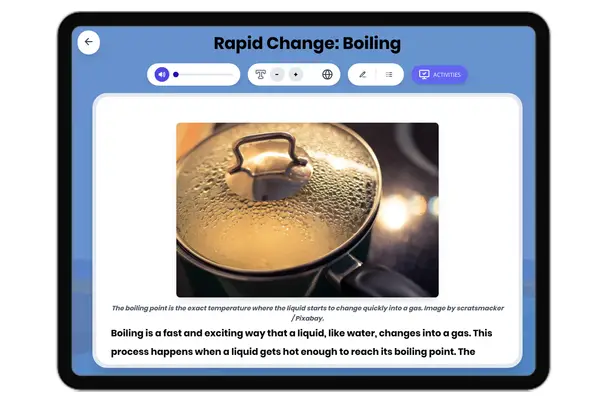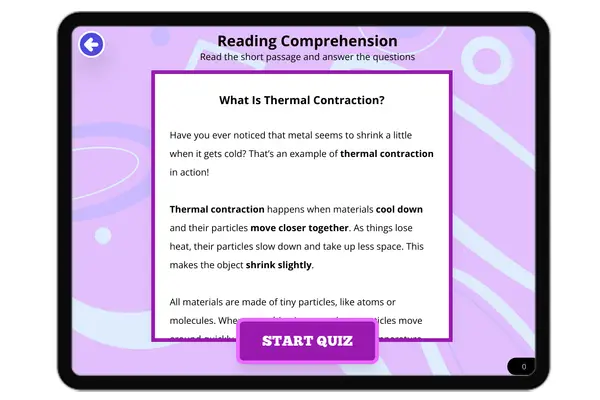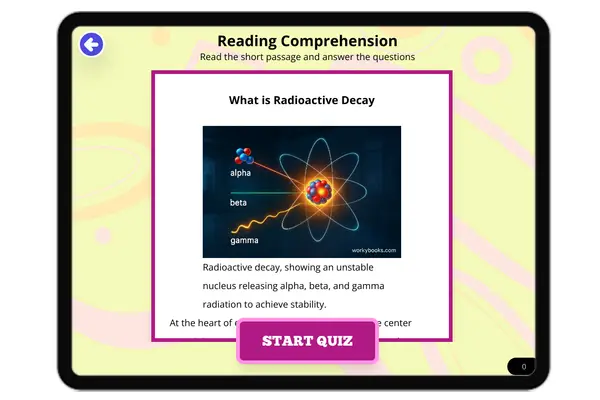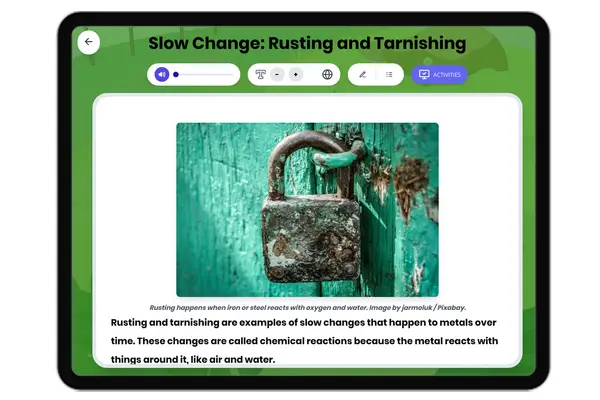Acetic Acid Lewis Structure — Reading Comprehension
Premium Resource
Grades
- 3
- 4
- 5
- 6
- 7
- 8
PRINT+DIGITAL RESOURCE
This learning resource is available in interactive and printable formats. The interactive worksheet can be played online and assigned to students. The Printable PDF version can be downloaded and printed for completion by hand.
About This Reader
"This learning module provides a comprehensive overview of the Lewis structure of acetic acid (CH₃COOH) for middle school students, aligning with NGSS standards. The passage explains fundamental concepts such as valence electrons and covalent bonding, using acetic acid as a clear, relatable example. It details the process of constructing the Lewis structure, highlighting key features like single and double bonds and lone pairs of electrons. By connecting the molecular structure to the macroscopic properties of vinegar, such as its acidity and uses in daily life, the module reinforces the core idea that a molecule's arrangement dictates its behavior. The content is designed to be accessible yet informative, building a strong foundation for future chemistry topics. This resource is perfect for self-study, classroom instruction, or as a supplement to a unit on chemical bonding and molecular structure."
Perfect For:
👩🏫 Teachers
- • Reading comprehension practice
- • Auto-graded assessments
- • Literacy skill development
👨👩👧👦 Parents
- • Reading practice at home
- • Comprehension improvement
- • Educational reading time
🏠 Homeschoolers
- • Reading curriculum support
- • Independent reading practice
- • Progress monitoring
Reading Features:
📖
Reading Passage
Engaging fiction or nonfiction text
❓
Comprehension Quiz
Auto-graded questions
📊
Instant Feedback
Immediate results and scoring
📄
Printable Version
Download for offline reading
🔊
Read Aloud
Voice-over with word highlighting
